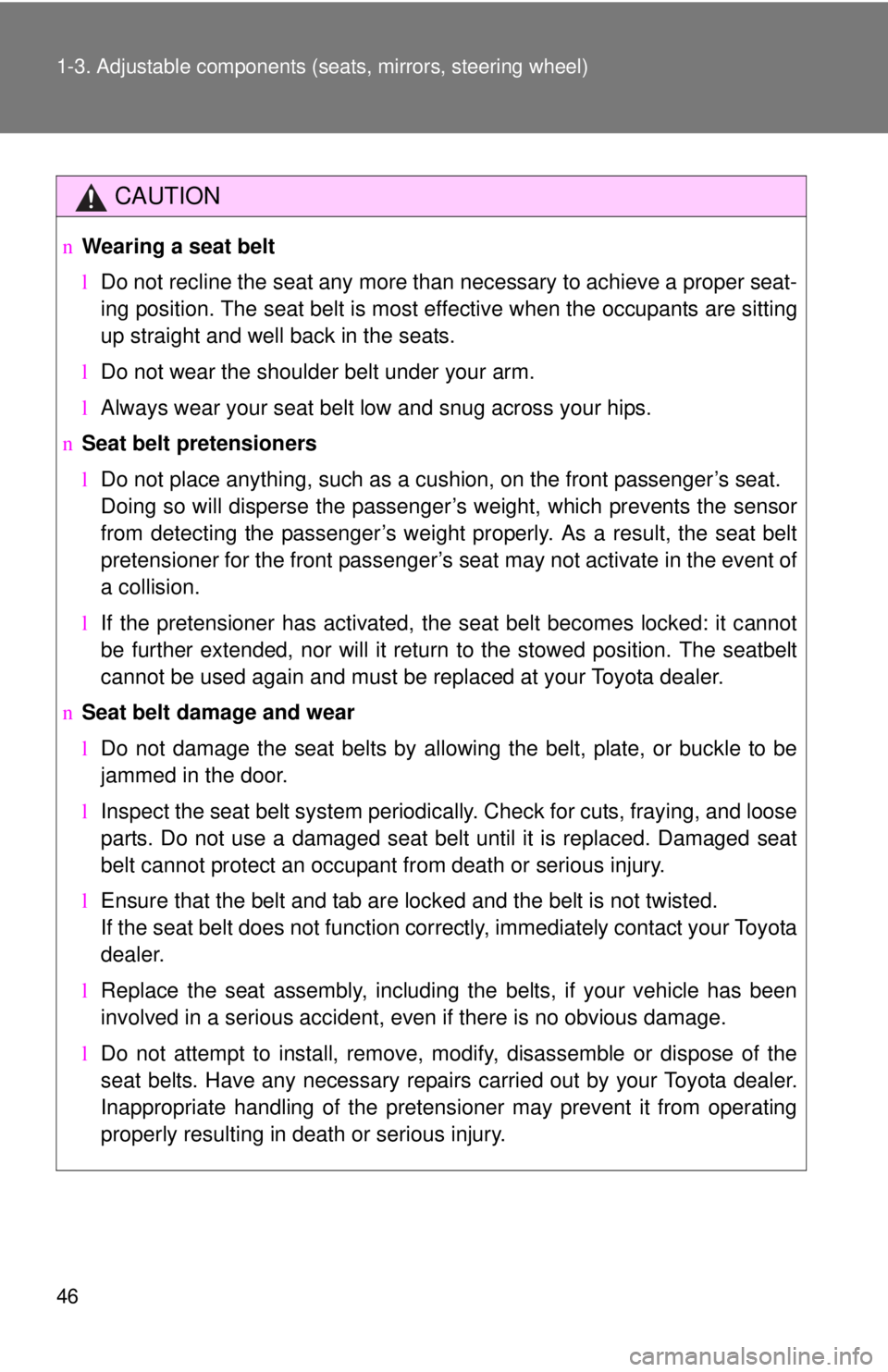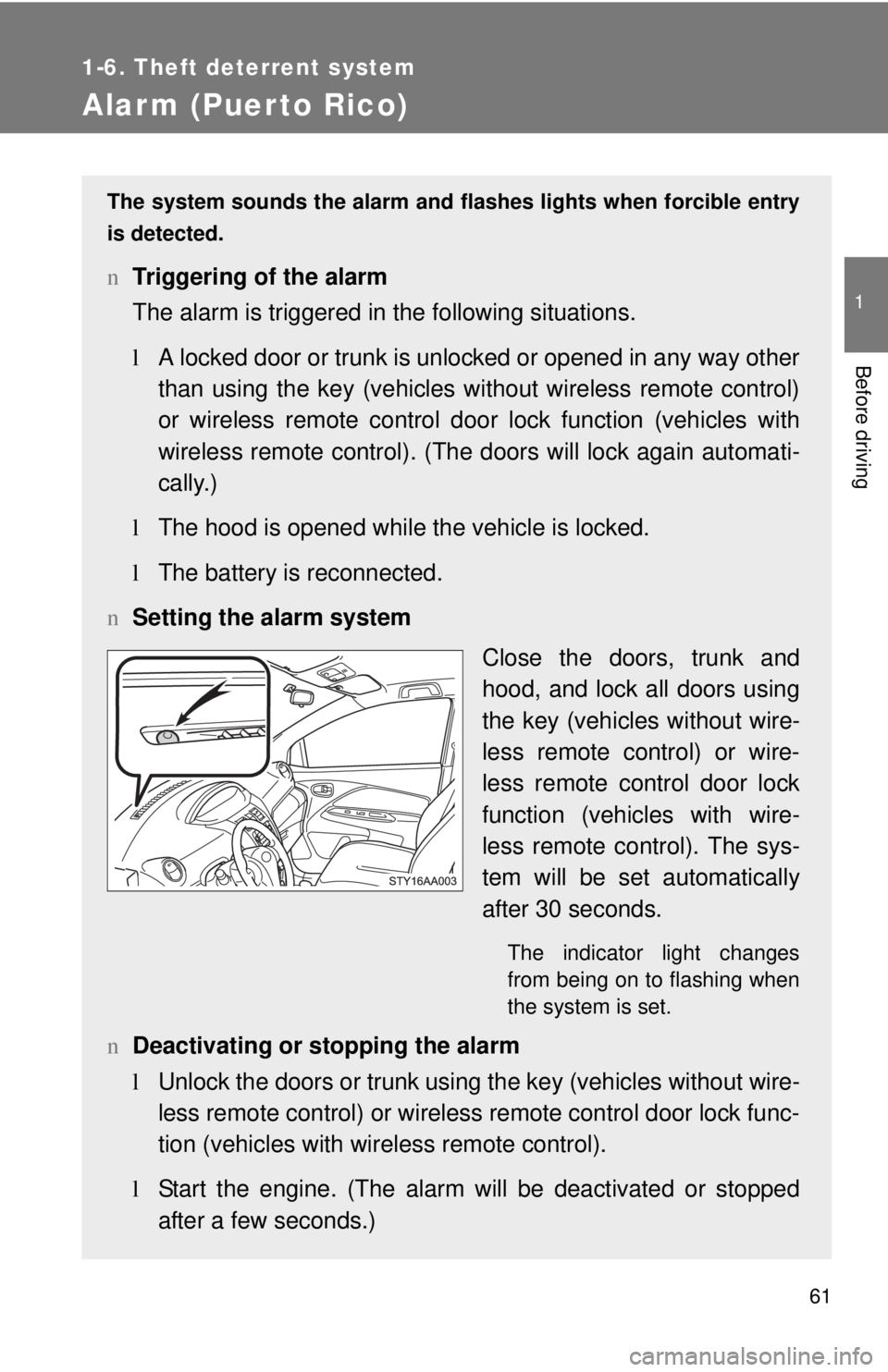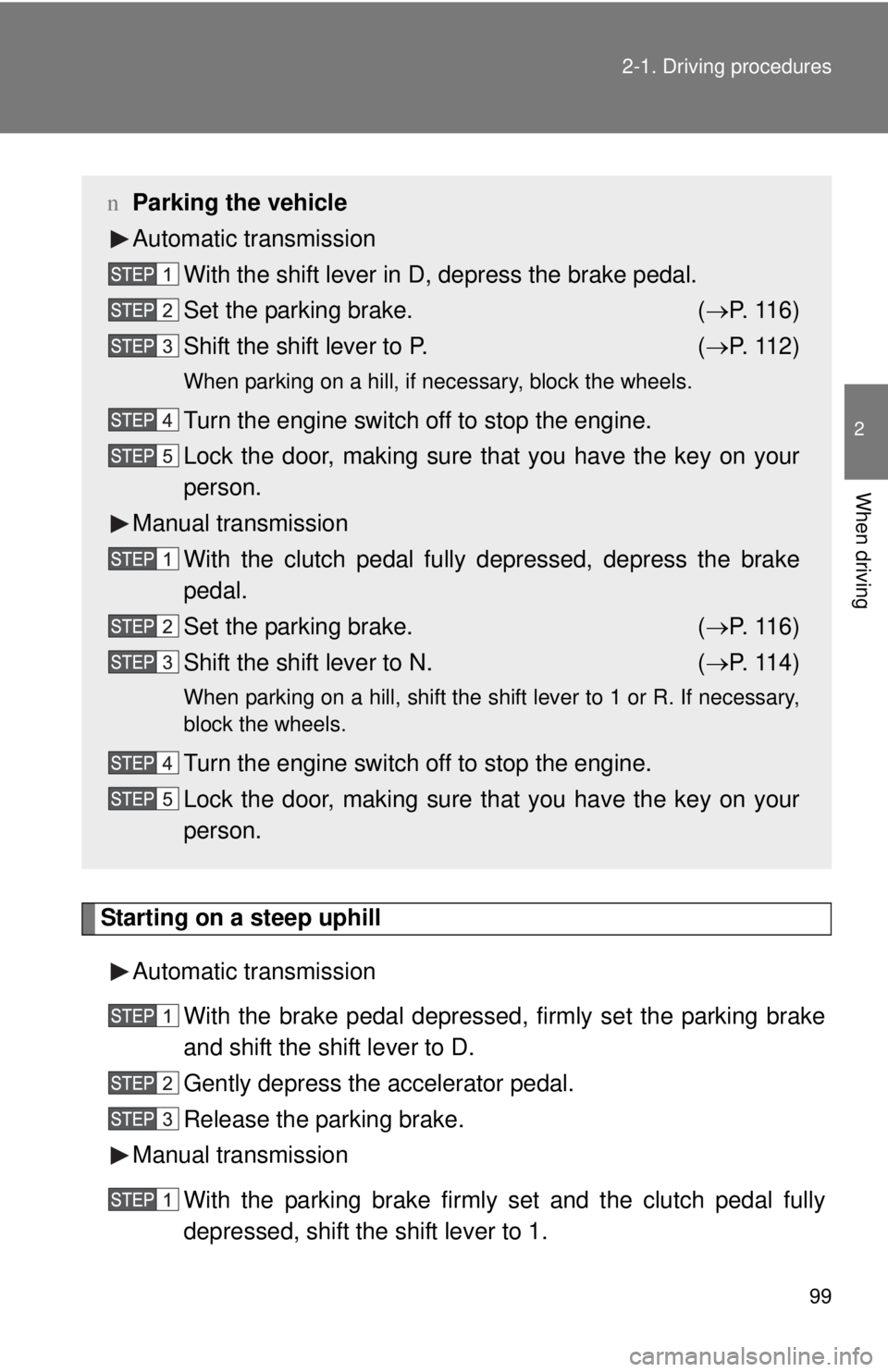Page 48 of 384
32
1-2. Opening, closing and locking the doors
Trunk
The trunk can be opened using the key or trunk opener.
nKey
Turn the master key clockwise
to release the trunk lid.
n Trunk opener
Release the trunk lid.
Page 49 of 384
33
1-2. Opening, closing and locking the doors
1
Before driving
Luggage security system
To protect luggage stored in the trunk against theft, do the following
procedures. Vehicles with split rear seats:
Move the security lock levers to
lock the rear seatbacks.
Turn the master key counter-
clockwise to lock the trunk
opener feature.
nInternal trunk release lever
The trunk lid can be opened by pulling up
on the glow-in-the-dark lever located on
the inside of trunk lid.
The lever will continue to glow for some
time after the trunk lid is closed.
Page 50 of 384
34 1-2. Opening, closing and locking the doors
CAUTION
nCaution while driving
Keep the trunk lid closed.
This not only keeps personal belongings from being thrown out, but also pre-
vents exhaust gases from entering the vehicle.
n When children are in the vehicle
Never leave children unattended in the vehicle as they may lock themselves
in the vehicle or trunk, which could cause the child to overheat or suffocate,
resulting in death or serious injury.
Page 62 of 384

46 1-3. Adjustable components (seats, mirrors, steering wheel)
CAUTION
nWearing a seat belt
lDo not recline the seat any more than necessary to achieve a proper seat-
ing position. The seat belt is most effective when the occupants are sitting
up straight and well back in the seats.
l Do not wear the shoulder belt under your arm.
l Always wear your seat belt low and snug across your hips.
n Seat belt pretensioners
lDo not place anything, such as a cushion, on the front passenger’s seat.
Doing so will disperse the passenger’s weight, which prevents the sensor
from detecting the passenger’s weight properly. As a result, the seat belt
pretensioner for the front passenger’s seat may not activate in the event of
a collision.
l If the pretensioner has activated, the seat belt becomes locked: it cannot
be further extended, nor will it return to the stowed position. The seatbelt
cannot be used again and must be replaced at your Toyota dealer.
n Seat belt damage and wear
lDo not damage the seat belts by allowing the belt, plate, or buckle to be
jammed in the door.
l Inspect the seat belt system periodically. Check for cuts, fraying, and loose
parts. Do not use a damaged seat belt until it is replaced. Damaged seat
belt cannot protect an occupant from death or serious injury.
l Ensure that the belt and tab are locked and the belt is not twisted.
If the seat belt does not function correctly, immediately contact your Toyota
dealer.
l Replace the seat assembly, including the belts, if your vehicle has been
involved in a serious accident, even if there is no obvious damage.
l Do not attempt to install, remove, modify, disassemble or dispose of the
seat belts. Have any necessary repairs carried out by your Toyota dealer.
Inappropriate handling of the pretensioner may prevent it from operating
properly resulting in death or serious injury.
Page 70 of 384
54 1-4. Opening and closing the windows
Lock switchPress the switch down to lock
passenger window switches.
Use this switch to prevent chil-
dren from accidentally opening or
closing a passenger window.
nThe power windows can be operated when
The engine switch is in the ON position.
n Operating the power windows after turning the engine switch off
(driver’s window only)
The power windows can be operated for approximately 45 seconds even
after the engine switch is turned off. They cannot, however, be operated
once either front door is opened.
CAUTION
n Closing the windows
Observe the following precautions.
Failing to do so may result in death or serious injury.
lCheck to make sure that all passengers do not have any part of their body
in a position where it could be caught when a window is being operated.
l Do not allow children to operate the power windows.
Closing a power window on someone can cause serious injury, and in
some instances, even death.
Page 77 of 384

61
1
1-6. Theft deterrent system
Before driving
Alarm (Puerto Rico)
The system sounds the alarm and flashes lights when forcible entry
is detected.
n Triggering of the alarm
The alarm is triggered in the following situations.
lA locked door or trunk is unlocked or opened in any way other
than using the key (vehicles without wireless remote control)
or wireless remote control d oor lock function (vehicles with
wireless remote control). (The doors will lock again automati-
cally.)
l The hood is opened while t he vehicle is locked.
l The battery is reconnected.
n Setting the alarm system
Close the doors, trunk and
hood, and lock all doors using
the key (vehicles without wire-
less remote control) or wire-
less remote control door lock
function (vehicles with wire-
less remote control). The sys-
tem will be set automatically
after 30 seconds.
The indicator light changes
from being on to flashing when
the system is set.
nDeactivating or stopping the alarm
lUnlock the doors or trunk using the key (vehicles without wire-
less remote control) or wireless remote control door lock func-
tion (vehicles with wireless remote control).
l Start the engine. (The alarm will be deactivated or stopped
after a few seconds.)
Page 78 of 384
62 1-6. Theft deterrent system
nItems to check before locking the vehicle
To prevent unexpected triggering of the alarm and vehicle theft, make sure
of the following.
lNobody is in the vehicle.
l The windows are closed before the alarm is set.
l No valuables or other personal items are left in the vehicle.
n Triggering of the alarm
The alarm may be triggered in the following situations.
(Stopping the alarm deactivates the system.)
lA person inside the vehicle opens a door, the trunk or hood.
l The battery is recharged or replaced when the vehicle is locked.
n When the battery is disconnected
Be sure to deactivate the alarm system.
If the battery is discharged before deactivating the alarm system, the alarm
may be triggered when the battery is reconnected.
Page 114 of 384

99
2-1. Driving procedures
2
When driving
Starting on a steep uphill
Automatic transmission With the brake pedal depressed, firmly set the parking brake
and shift the shift lever to D.
Gently depress the accelerator pedal.
Release the parking brake.
Manual transmission
With the parking brake firmly set and the clutch pedal fully
depressed, shift the shift lever to 1.
nParking the vehicle
Automatic transmission
With the shift lever in D, depress the brake pedal.
Set the parking brake. ( →P. 116)
Shift the shift lever to P. ( →P. 112)
When parking on a hill, if necessary, block the wheels.
Turn the engine switch off to stop the engine.
Lock the door, making sure that you have the key on your
person.
Manual transmission
With the clutch pedal fully depressed, depress the brake
pedal.
Set the parking brake. ( →P. 116)
Shift the shift lever to N. ( →P. 114)
When parking on a hill, shift the shift lever to 1 or R. If necessary,
block the wheels.
Turn the engine switch off to stop the engine.
Lock the door, making sure that you have the key on your
person.